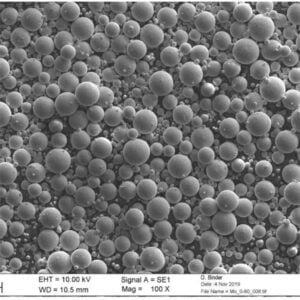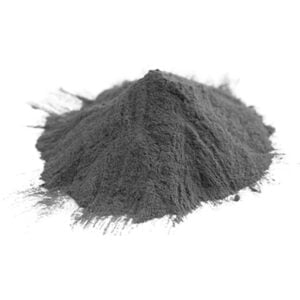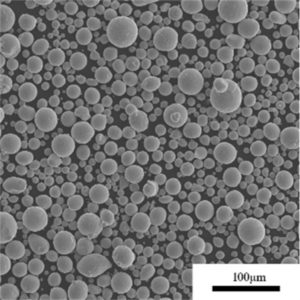チタンパウダー:生産,特性、
目次
概要
チタン粉末は、高強度、低密度、耐腐食性、生体適合性のユニークな組み合わせで評価されている多用途の金属材料です。粉末状のチタンは、金属射出成形 (MIM)、積層造形 (AM)、熱間静水圧プレス (HIP)、粉末冶金 (PM) プレスおよび焼結などの高度な製造技術を容易にし、複雑なチタン部品を製造します。
チタン粉末の主な用途には、航空宇宙部品、医療用インプラント、自動車部品、スポーツ用品、化学処理、消費者向け製品などがあります。このガイドでは、製造方法、合金組成、特性、特性、仕様、用途、グローバルサプライヤーなど、チタン粉末の包括的な概要を説明します。エンジニア、製品設計者、技術プログラムマネージャーがチタン粉末を選択して使用するのに役立つことを目的としています。 チタン粉.
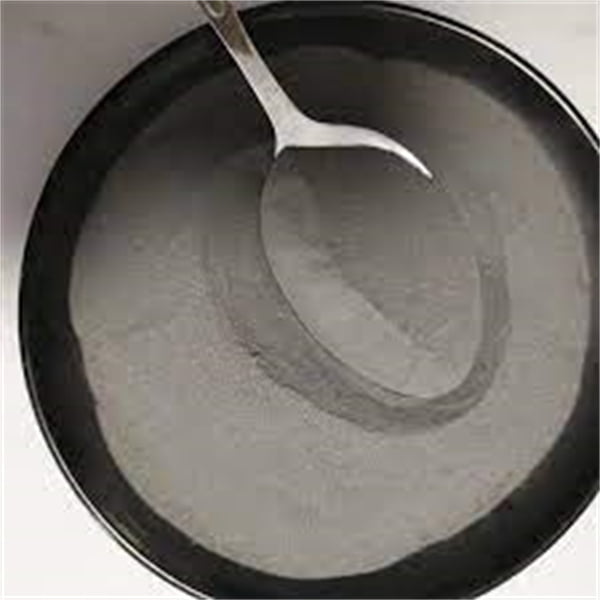
チタン粉末の製造
チタン粉末は主に以下の方法で製造されます。
チタンパウダーの製造方法
- ガス噴霧 – 高圧不活性ガスが溶融チタンを球状粉末に分解します
- プラズマ霧化 – チタン電極アークが超微細球状粉末を生成
- 水素化/脱水素化 – チタン水素化物粉末(TiO2)は脱水素化されて微粉末になる
- 機械加工 – ボールミル粉砕によりチタンチップが不規則な粒子に分解される
- プラズマ球状化 – 不規則な粉末をプラズマで溶かして球形にする
最も一般的なのはガスアトマイゼーションと機械的粉砕で、それぞれ球形と角形の粉末を作成します。さらにふるい分け、調整、ブレンドを行うことで、アプリケーション固有の粒度分布が作成されます。
チタン粉末の組成
商業的に純粋な チタン粉 入手可能ですが、工業用の粉末のほとんどには、少量の合金元素が含まれています。
一般的なチタン粉末の組成
| 合金 | 一次合金元素 | 主な特徴 |
|---|---|---|
| CPチタン | 99.5%+ Ti | 優れた耐食性 |
| Ti-6Al-4V | 6% Al, 4% V | 高強度、熱処理可能 |
| Ti-6Al-7Nb | 6% Al, 7% Nb | 高強度、生体適合性 |
| Ti-555 | 5% アルミニウム、5% モリブデン、5% バリウム | 熱処理可能、機械加工可能 |
| Ti-1023 | 10% V, 2% Fe, 3% Al | 高強度、優れた延性 |
アルミニウム、バナジウム、ニオブは、強度と加工性を高めるためによく添加されます。微量のホウ素、炭素、鉄、酸素も含まれています。
合金化により、優れた耐食性を維持しながら、微細構造、硬度、機械加工性などの特性を調整できます。
チタン粉末の特性
チタン粉末の主な特性は次のとおりです。
チタンパウダーの特徴
| 特徴 | 代表値 | 意義 |
|---|---|---|
| 粒子径 | 10~150ミクロン | 焼結挙動、表面仕上げ |
| 粒子形状 | 球状、角状、樹枝状 | 粉体の流れと充填密度 |
| 見かけ密度 | 1.5 – 4.0 g/cc | 押す動作と扱う動作 |
| タップ密度 | 2.5 - 4.5 g/cc | 圧縮性の指標 |
| ホール流量 | 25~35秒/50g | 粉体の流動性 |
| 強熱減量 | 0.1 – 0.5 重量% | 酸素と水分含有量 |
| 自然発火性 | なし | 可燃性と取り扱い上の注意 |
粒度分布と粉末の形状は、粉末の流れ、圧縮、焼結反応、および圧縮および焼結された部品の密度に大きな影響を与えます。見かけの密度は、粉末の圧縮性を示します。
の性質 チタンパウダー
チタン粉末の主な特性は次のとおりです。
チタン粉末の特性
| プロパティ | 純チタン | Ti-6Al-4V | Ti-6Al-7Nb |
|---|---|---|---|
| 密度 | 4.5g/cc | 4.43 g/cc | 4.52 g/cc |
| 引張強度 | 240 MPa | 930MPa | 900 MPa |
| 降伏強度 | 170 MPa | 860 MPa | 825 MPa |
| 伸び | 24% | 10% | 15% |
| 弾性係数 | 102万気圧 | 114 GPa | 105GPa |
| 硬度 | 80 HB | 334 HB | 321 HB |
| 熱容量 | 522 ジュール/kg·K | 526 J/kg·K | 527 J/kg·K |
| 熱伝導率 | 7.2W/m·K | 7.2W/m·K | 6.7 W/m-K |
アルミニウム、バナジウム、ニオブとの合金化により、強度と硬度が大幅に向上します。具体的な特性は、最終的な微細構造に大きく依存します。
チタン粉末の応用例
チタン粉末の主な用途は次のとおりです。
チタン粉末の用途
| 産業 | 用途 | 主な理由 |
|---|---|---|
| 航空宇宙 | 構造部品、タービンブレード、ファスナー | 高い強度対重量比 |
| メディカル | 整形外科用インプラント、歯科用インプラント、外科用器具 | 生体適合性、耐食性 |
| 自動車 | コネクティングロッド、バルブ、スプリング、ファスナー | 軽量、パフォーマンス |
| ケミカル | タンク、パイプ、バルブ、ポンプ | 耐食性 |
| スポーツ用品 | ゴルフクラブ、自転車、ヘルメット | 強度、カスタマイズされた機械的特性 |
| 石油化学 | ダウンホールツール、坑口部品 | 強度、耐腐食性 |
チタンのユニークな特性により、過酷な環境でも機械的完全性を維持しながら航空宇宙部品の重量を軽減するのに適しています。
優れた生体適合性と耐腐食性により、整形外科用インプラントや歯科用インプラントに使用されています。チタンの特性をカスタマイズできるため、特殊な性能特性を備えたスポーツ用品の製造が容易になります。
チタン粉末の仕様
チタン粉末の組成と品質は、さまざまな標準仕様によって定義されています。
チタン粉末規格
| スタンダード | スコープ | 粒子径 | 純度 | 化学 |
|---|---|---|---|---|
| ASTM B348 | グレード1-4の非合金チタン粉末 | -635メッシュ | 99.5%、99.9%、99.95% チタン | O、C、N、Hの制限 |
| ASTM B801 | Ti-6Al-4V合金粉末 | -635メッシュ | Ti、Al、Vの組成範囲 | インタースティシャル制限 |
| ISO 23301 | 付加製造チタン粉末 | 10~45ミクロン | 99.5%+ Ti | O、N、C、H、Feの制限 |
| AMS 4992 | 航空宇宙グレードのTi-6Al-4V粉末 | -150メッシュ | Ti、Al、Vの組成範囲 | インタースティシャル制限 |
これらは、合金添加物の許容レベル、酸素/窒素/炭素などの不純物、粒度分布、およびさまざまな用途に関連するその他のテスト方法を定義します。
の世界的なサプライヤー チタンパウダー
多くの大手企業が、小規模な地域メーカーとともにチタン粉末を生産しています。
チタンパウダー製造業者
| サプライヤー | 生産方法 | 材料 | 能力 |
|---|---|---|---|
| ATIメタルズ | ガス噴霧 | Ti-6Al-4V、Ti-1023、純Ti | 幅広い合金範囲、大量生産 |
| プラクセア | ガス噴霧 | Ti-6Al-4V、CPチタン | 小ロット、短納期 |
| カーペンター添加剤 | ガスアトマイゼーション、水素化物-脱水素化物 | Ti-6Al-4V、Ti-6Al-7Nb、純Ti | カスタム合金、小ロット |
| エーピーアンドシー | プラズマ霧化 | CPチタン、チタン合金 | 10~45ミクロンの超微粒子粉末 |
| テクナ | プラズマ球状化 | Ti-6Al-4V、CPチタン | チップを球状粉末に変換する |
| 宝鶏ハンズチタン | ハイドライド | CPチタン、チタン-6Al-4V | 低コストの中国メーカー |
多くの企業は、標準およびカスタムの合金組成の両方を供給しています。スクラップやチップを粉末に加工する委託加工サービスを提供する企業もあります。
チタン粉末の選択
チタン粉末を選択する際に考慮すべき重要な点は次のとおりです。
- 合金組成 – 強度、延性、硬度などの望ましい特性のバランスをとる
- 純度レベル – 機械的特性と微細構造に影響する
- 粒子の大きさと形状 – 粉末の流れ、密度、表面仕上げに影響します
- 見掛け密度とタップ密度 – 圧縮性と焼結反応を示す
- 化学的適合性 – 酸や塩水などの使用条件向け
- サンプリング手順 – 粉末ロットの代表的なテスト
- 品質認証 – ISO 9001、AS9100など
- 技術的専門知識 粉末製造業者から
サンプルの構築とプロトタイプは、特定の用途向けの新しい合金と粉末の適格性を判断するのに役立ちます。信頼できるサプライヤーと緊密に連携して、特性が十分に評価されたチタン粉末を入手し、最適な結果を得てください。
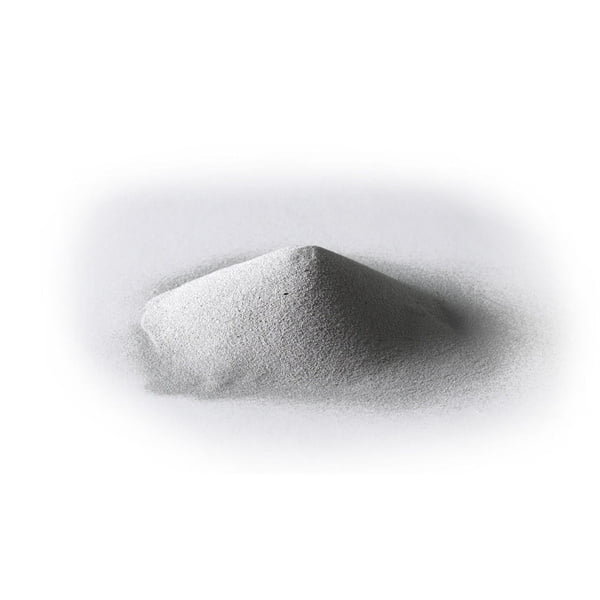
よくあるご質問
プラズマアトマイズチタン粉末の利点は何ですか?
プラズマ噴霧化により、通常 10 ~ 45 ミクロンの大きさの球状の流動粒子が生成されます。これにより、優れた焼結密度と表面仕上げが可能になります。
チタン粉末が自然発火性になる原因は何ですか?
自然発火性のチタン粉末は空気中で自然発火します。これは、10 ミクロン未満の極めて小さな粒子サイズによって表面積と反応性が大幅に増加するためです。自然発火性の粉末には不活性ガスを使用してください。
粒子の形状はチタン粉末の特性にどのように影響しますか?
球状粉末は流動性がよく、より高く均一な密度と機械的特性を提供します。不規則な粉末は、より優れたグリーン強度と圧縮性を提供しますが、収縮が予測しにくくなります。
どのような後処理によってチタン粉末の再利用を改善できますか?
ふるい分け、粉砕、熱処理により、規格外の粉末を再利用することができます。プラズマ球状化により、チップや粗い粒子が球状の粉末原料に変換されます。
チタン部品の積層造形にはどのような規格が適用されますか?
ASTM F3001-14 は、AM 用 Ti 合金粉末の特性評価と品質管理をカバーしています。ASTM F2924-14 は、AM チタンの機械的特性を評価するための標準テスト方法を示しています。
チタンとスチールの複合構造を 3D プリントできますか?
はい、一部の金属 3D 印刷プロセスでは、精密な材料切り替えによって 1 つの部品内でチタン合金とステンレス鋼合金を切り替え、バイメタル部品を構築します。
結論
チタン粉末は、金属のユニークな特性により、エンジニアに高性能コンポーネントを製作する優れた柔軟性を提供します。粉末特性を慎重に選択し、経験豊富なサプライヤーと緊密に連携することで、多くの重要な用途で最適な結果を得ることができます。継続的な進歩により、チタン粉末冶金プロセスの機能、品質、コスト効率が拡大し続けています。
シェアする
MET3DP Technology Co., LTDは、中国青島に本社を置く積層造形ソリューションのリーディングプロバイダーです。弊社は3Dプリンティング装置と工業用途の高性能金属粉末を専門としています。
関連記事
Met3DPについて
最新情報
製品

3Dプリンティングと積層造形用金属粉末






